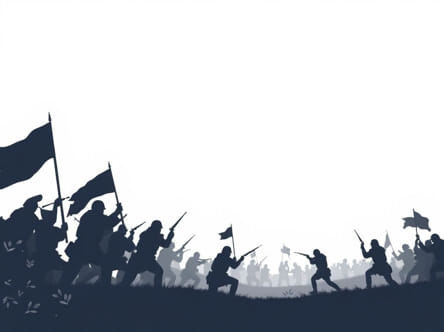The Second Battle of the Marne marked a crucial turning point in World War I. Taking place from July 15 to August 6, 1918, it represented the last major German offensive on the Western Front. The battle was fought in the Marne River region in France, involving German forces against an alliance of French, American, British, and Italian troops. It was not only a military clash but also a political and strategic struggle that shaped the outcome of the war. Understanding the causes, events, and outcomes of the Second Battle of the Marne offers valuable insight into how the balance of power shifted in favor of the Allies.
Background and Prelude to the Battle
Germany’s Strategic Dilemma
By mid-1918, the German High Command was under intense pressure. With the Russian withdrawal from the war following the Bolshevik Revolution, Germany had redirected its focus to the Western Front. The Spring Offensive, or Kaiserschlacht, had failed to secure a decisive victory. Hoping to break the stalemate before American forces arrived in overwhelming numbers, Germany launched Operation Friedensturm aiming to lure Allied troops away from Flanders by launching an assault near the Marne.
Allied Preparations
The Allies, aware of a potential German offensive thanks to intercepted communications, fortified their positions. General Ferdinand Foch, the newly appointed Supreme Allied Commander, coordinated a plan to absorb the German attack and respond with a powerful counteroffensive. The participation of fresh American troops added new strength to the Allied lines, providing both manpower and morale.
The German Attack Begins
Initial Success and Stiff Resistance
On July 15, 1918, German forces launched a two-pronged assault one along the eastern sector near Reims and the other in the west near Château-Thierry. The German army used a combination of artillery bombardments and stormtrooper tactics to attempt a breakthrough. While they achieved some early success in penetrating Allied lines, they met unexpectedly fierce resistance. French troops under General Gouraud managed to repel the eastern assault effectively, using defense in depth strategies.
American Forces in Action
One of the defining features of the battle was the increasing involvement of American forces under General John J. Pershing. U.S. divisions such as the 3rd Infantry Division, known as the ‘Rock of the Marne,’ held their ground despite the German onslaught. Their successful defense prevented a German breakthrough and earned international recognition. The arrival of the Americans gave the Allies a significant psychological and tactical advantage.
The Turning Point: Allied Counteroffensive
Launch of the Counterattack
On July 18, the Allies launched a massive counteroffensive involving French, British, American, and Italian troops. This was a surprise to the Germans, who had overextended their supply lines. Supported by more than 350 tanks, the Allies pushed against the weakened German flanks. Unlike previous offensives, the Allied command showed greater coordination and used modern combined-arms tactics effectively.
German Withdrawal
By the end of July, German forces began to retreat from the Marne salient. The retreat was not only a tactical necessity but also a strategic failure. The Germans lost critical territory and suffered heavy casualties. Their inability to achieve a breakthrough ended their hopes for a swift conclusion to the war. More importantly, it marked the beginning of continuous Allied offensives that would follow until the end of the war.
Consequences and Significance
A Shift in Momentum
The Second Battle of the Marne proved to be a decisive moment in World War I. It ended Germany’s final push on the Western Front and shifted the momentum firmly to the Allies. The battle demonstrated that the German army could no longer sustain large-scale offensives. In contrast, Allied coordination and strength continued to grow, particularly with the increasing presence of U.S. troops.
Heavy Casualties and Resource Drain
The human cost of the battle was immense. German losses were estimated at around 168,000 soldiers, while the Allies suffered approximately 119,000 casualties. Although both sides paid a heavy price, Germany’s dwindling resources and lack of reinforcements made recovery more difficult. The loss of trained personnel and material further weakened the German war effort in the months that followed.
Impact on Morale and Strategy
The psychological effects of the Second Battle of the Marne were significant. For Germany, the defeat demoralized both troops and civilian populations, accelerating internal unrest. For the Allies, the victory was a morale booster that reinforced the effectiveness of coordinated strategy. It marked the beginning of a series of offensives that would lead to the Hundred Days Offensive and eventually the Armistice of November 11, 1918.
Lessons Learned from the Battle
Evolution of Warfare
The Second Battle of the Marne illustrated how warfare had evolved since the beginning of World War I. Static trench warfare was giving way to more dynamic, mobile operations. The use of tanks, airplanes, and coordinated infantry-artillery attacks indicated a shift in military doctrine that would influence future conflicts.
Importance of Allied Unity
One of the most critical factors in the battle’s outcome was the unity and coordination among Allied forces. Under the leadership of General Foch, the Allied armies acted with a common purpose and strategy. This cooperation was in stark contrast to earlier stages of the war, where coordination had often been lacking. The integration of American forces also proved vital in reinforcing the strength and diversity of the Allied coalition.
The Second Battle of the Marne was not just a tactical victory but a pivotal moment in World War I that altered the trajectory of the conflict. It marked the end of German offensives on the Western Front and the beginning of a relentless Allied advance. The battle highlighted the growing role of American forces, the importance of coordinated command, and the evolution of modern warfare tactics. Its legacy endures as a testament to the determination of the Allies and the eventual path to peace.
